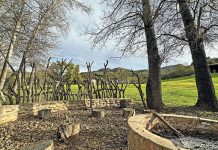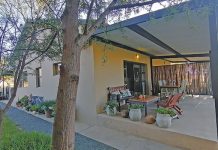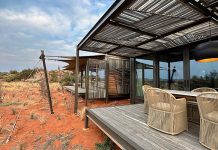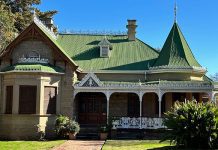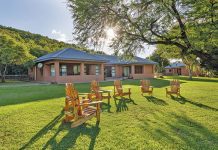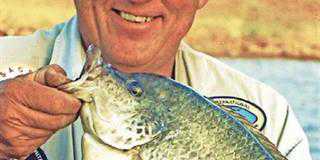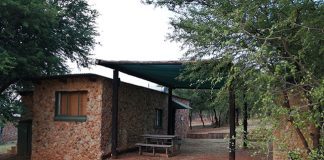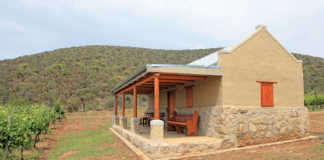Not all modifications work, but a few work miracles. I learned that the hard way. Although I had a big 4×4 international truck to pull my ski-boat, I also had a wonderful little Ferrari-red Nissan 1400 bakkie, which gave sterling service. My red three-wheeled Honda bike fitted into the back as if they were made for one another. It was fast and fun to drive, and perfect to quickly shoot off to some river, dam or estuary for a few hours’ bank fishing, as long as you didn’t dump a bucket of sand in front of it. Then it was guaranteed to get stuck.
With fishing often being better at hard-to-reach-places, I lost count of how many times the red bakkie got stuck on the way. So I decided to turn it into a four-wheel-drive by mounting the external transfer gearbox of a Suzuki jeep to the Nissan body. I fitted the Suzuki’s live axles, leaf-spring suspension and drive train to the Nissan. All fitted fine and looked great, while the Suzuki’s large wheels gave it exceptional ground clearance. But it was a big mistake.
Although it was as strong as a bull, could climb any mountain and drive right through the river to the other side where the big fish usually lurked, it wasn’t fun to drive any more. On the highway it was so slow, every time you wanted to go somewhere, you only got there the next day. To cruise at a reasonable speed, you needed a 12-speed gearbox. I sold it to someone who wanted to go nowhere, except to the other side of some obstacle he could’ve easily driven around.
Practical camera modifications
Some modifications do have more practical value, like some of my camera alterations. In the 22 October issue, I described simple changes to my Panasonic Lumix FZ50 fixed-lens super-zoom digital camera. This camera originally sold for only a fraction of the astronomical price-tags of some of the big-name "single lens reflex" (SLR) cameras, which ironically need a host of additional lenses to focus from 28mm to over 1 200mm (0,56 – 36,4x optical zoom). The same as what my rather affordable FZ50 can now do without changing its compact standard lens.
But I wanted it to do even more, so I had to modify it further. I wanted to photograph the micro-world of small insects, spiders and other tiny creatures that so often go unnoticed beneath our feet. The biggest problem I had with the FZ50 was that its close-up (macro) ability was inferior to what I needed. So I bought a close-up lens, but it was rubbish, so I gave it away. Its focal point was so close to the lens that it shielded the light of the flash and active insects rarely allow so close an approach.The lens I wanted had to take high-quality close-ups of tiny insects up to 2,5m away, and would possibly be called a "screw-on-telephoto-close-up-adapter". None of the dealers I consulted had ever heard of such a gadget and thought I was crazy.
At that point the old modify-bug emerged again and I decided to make one of these gadgets myself. I scrounged through all the now-obsolete lenses in my cupboard and soon found what I needed. It was my Novoflex telephoto system, consisting of an empty pistol-grip focusing-tube, onto which different superb-quality lenses could be attached to the front to make it either a 250mm, 400mm, 600mm or 700mm telephoto. In its day this desirable system was very expensive, but although it can still be used with modern digital SLRs, its auto-facility wouldn’t function and it now has little monetary value.
I took the three largest lenses, each consisting of a single element, to an engineering friend to machine match threads on the lenses and the front of the tele-converter. And it worked! I could use each one for a different magnification, which enabled me to take quality pictures of the smallest insects, or even shoot butterflies on the wing in seconds. For maximum magnification, I screw all of the lenses together to photograph the minutest objects several metres away.
Not everyone will have access to such quality glass, but many different lenses may work. So many accessories, obsolete with the advent of digital photography, are still very usable with some modification. It could be an element of a large camera lens or projector, or even the objective lens of a pair of binoculars or telescope. Some will work and some won’t. You just have to test them until you find one with the correct focal distance. It also doesn’t have to be mounted onto your camera. Holding it in front of your lens may give roughly the same effect. Although the sensor of my highly affordable camera is smaller than that of big SLRs, the results can be spectacular and quite suitable for publication, as the images on these pages show. I don’t think I could’ve bought better close-up lenses than those I have now, even with all the money in the world.
The final touch – remote trigger
I wanted to do traditional bird-nest photography. Nests are often hidden by obstructing branches or foliage and a long telephoto is seldom the answer. The camera must be mounted on a tripod close to the nest and triggered remotely when the bird arrives. Although an electronic shutter-release was available for the camera, its connecting cable was only 500mm long. I wanted to trigger the camera from some distance so as not to disturb the bird.
I had an old pneumatic (air) shutter-release with a long extension tube, but the standard camera couldn’t use it. By bending, drilling and tapping a strip of scrap aluminium, I made a suitable attachment bracket for it. With slight pressure on the bulb of the shutter-release, the automatic reset function of the camera will now switch on the camera, focus, adjust the exposure and activate the flash – all from 20m away! I can now go from over 1 200mm telephoto to ultra close-up work, without ever changing its non-detachable lens. I think I now have what I wanted, and the modify-bug has returned to its lair – for now.
Contact Abré J Steyn on 083 235 4822 or e-mail [email protected].

